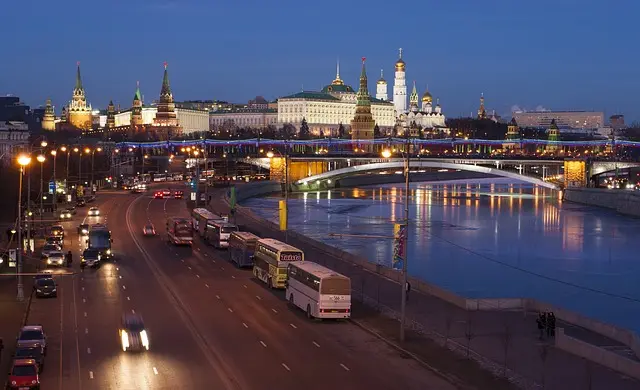
Main Attractions
Alexander Garden
Located outside the western wall of the Kremlin, Alexander Garden leads directly to the ticket office. Be prepared for long queues, especially for the Armoury Chamber tickets, which can take 2–3 hours. Unlike other sections, the Armoury Chamber has fixed entry times each day. If you spend too long queuing, you might only get tickets for a late session—or none at all.
• Tip: Visit the Kremlin in the morning to avoid the heaviest crowds. However, after purchasing tickets, you will still need to queue at the entrance.
The entrance security checkpoint has long lines. After passing security, you’ll enter the Kremlin through designated passageways.
Cathedral Square
The Kremlin’s main public area, Cathedral Square, features several historic churches and buildings. Tourists flock here for photos and selfies, especially when the guard procession passes.
Church of the Twelve Apostles
The Church of the Twelve Apostles is the first church on the visitor route.
• Built in the 17th century, it was commissioned by the Patriarch to serve as part of his residence.
• It honors the Twelve Apostles, the disciples of Jesus.
• One apostle, Philip, is specifically commemorated here. His name may sound unfamiliar in this form, but “Philip” is an alternative translation of the same name.
The church is notable for its onion domes, characteristic of Eastern Orthodox Church architecture.
About Eastern Orthodox Churches
The Eastern Orthodox Church, commonly known as Orthodoxy, considers itself the original Christian tradition. It diverged from the Roman Catholic Church in the 11th century, forming its center in Constantinople (modern-day Istanbul). Influenced by Byzantine culture, Orthodox church architecture features domes, arches, and columns that distinguish it from the Gothic styles of Western Europe.
Cathedral of the Dormition
The Cathedral of the Dormition (also known as the Cathedral of the Assumption) is one of the most historically significant churches in Russia.
• Function: It served as the central cathedral of the Russian Orthodox Church. For centuries, Russian tsars were crowned here.
• Interior: The walls are adorned with icons and frescoes, and the remains of many patriarchs rest within the cathedral.
The name “Dormition” comes from the Latin word dormire (to sleep), symbolizing the “falling asleep” or death of the Virgin Mary.
Ivan the Great Bell Tower
The Ivan the Great Bell Tower, standing at 81 meters, offers panoramic views of Moscow and its surroundings.
• Tsar Bell: Next to the tower is the Tsar Bell, once the largest bell in the world, weighing over 203 tons.
• Tickets: Tickets for the bell tower must be purchased at the main ticket office outside the Kremlin or possibly at the Armoury Chamber ticket desk inside (to be confirmed).
Cathedral of the Archangel
Built between 1505 and 1508, the Cathedral of the Archangel combines traditional Russian five-dome architecture with elements of Renaissance design influenced by Venetian styles.
• Dedication: This church honors Archangel Michael, the patron saint of the Russian military.
• Architectural Significance: Designed by Italian architect Aloisio Novy, it incorporates a blend of Russian and Western influences.
The name Michael comes from the Latin “Michaelis,” which translates to “Who is like God?” in Hebrew. The anglicized version, Michael, is commonly used today.
Why Visit the Kremlin?
The Kremlin encapsulates 800 years of Russian history and showcases some of the country’s most important architectural and cultural landmarks. From its majestic cathedrals to its military fortifications, it offers a unique glimpse into Russia’s storied past and is well worth a visit!
